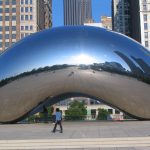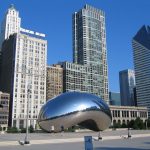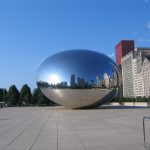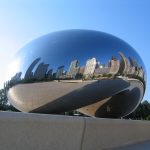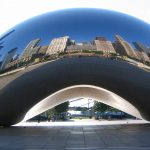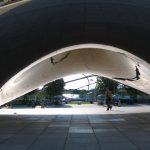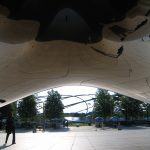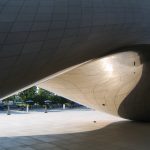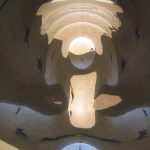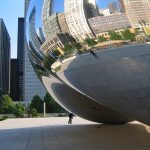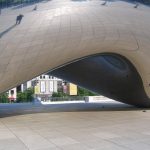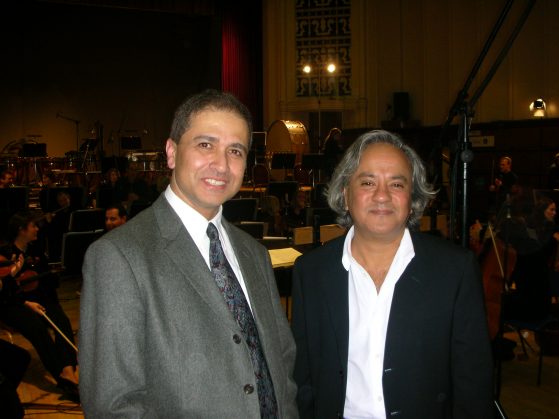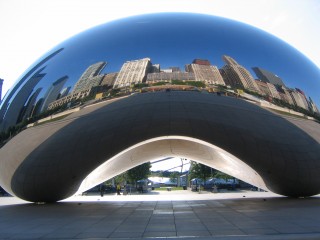Between Earth and Sky
YEAR: 2006
ORCHESTRATION: Full Symphony Orchestra
DURATION: 28'
COMMISSIONED BY: BBC Symphony Orchestra
DEDICATION: Anish Kapoor
AVAILABILITY: Published by Novello & Co.
PREMIERE DATE: November 24, 2006
PREMIERE INFORMATION:
Hammersmith Town Hall, London
BBC Symphony Orchestra conducted by Alexander Rumpf
INTRODUCTION:
- Cloud Gate by Anish Kapoor, Millennium Park, Chicago – Images by Nag Odekar
- Cloud Gate by Anish Kapoor, Millennium Park, Chicago – Images by Nag Odekar
- Cloud Gate by Anish Kapoor, Millennium Park, Chicago – Images by Nag Odekar
- Cloud Gate by Anish Kapoor, Millennium Park, Chicago – Images by Nag Odekar
- Cloud Gate by Anish Kapoor, Millennium Park, Chicago – Images by Nag Odekar
- Cloud Gate by Anish Kapoor, Millennium Park, Chicago – Images by Nag Odekar
- Cloud Gate by Anish Kapoor, Millennium Park, Chicago – Images by Nag Odekar
- Cloud Gate by Anish Kapoor, Millennium Park, Chicago – Images by Nag Odekar
- Cloud Gate by Anish Kapoor, Millennium Park, Chicago – Images by Nag Odekar
- Cloud Gate by Anish Kapoor, Millennium Park, Chicago – Images by Nag Odekar
- Cloud Gate by Anish Kapoor, Millennium Park, Chicago – Images by Nag Odekar
- Cloud Gate by Anish Kapoor, Millennium Park, Chicago – Images by Nag Odekar
WORK NOTES:
Cloud Gate is British artist Anish Kapoor’s first public outdoor work installed in the United States. The 110-ton elliptical sculpture is forged of a seamless series of highly polished stainless steel plates, which reflect the city’s famous skyline and the clouds above. A 12-foot-high arch provides a “gate” to the concave chamber beneath the sculpture, inviting visitors to touch its mirror-like surface and see their image reflected back from a variety of perspectives.
Inspired by liquid mercury, the sculpture is among the largest of its kind in the world, measuring 66-feet long by 33-feet high.
What I wanted to do in Millennium Park is make something that would engage the Chicago skyline…so that one will see the clouds kind of floating in, with those very tall buildings reflected in the work. And then, since it is in the form of a gate, the participant, the viewer, will be able to enter into this very deep chamber that does, in a way, the same thing to one’s reflection as the exterior of the piece is doing to the reflection of the city around.
– Anish Kapoor
While Anish Kapoor’s work has greatly influenced my thinking in recent years, Between Earth and Sky is my first direct creative engagement with it. From the first time that I saw early images of Cloud Gate, his monumental sculpture of stainless steel set in Chicago’s Millennium Park, I was entranced. What particularly struck me was a sense of timelessness emanating from the work, and I wondered how such a sensibility could be explored musically, without becoming reductively minimalist. The simplicity of the work is immediate but deceptive, and seems to be inviting us into a symbolic sacred space, a region beyond mere personal expressiveness. As in much of Kapoor’s work, there is a joyfulness and luminosity. It goes far beyond the appreciation of beautiful objects, for the engagement is visceral and overwhelming – precisely his intention.
Cloud Gate is a monumental mirror, mirror of self and other, both private and public in its reach. Perception of it involves multiple reflections, for, much as it reflects us, the viewers, we, too, reflect it back in the mirror of our mind. My composition is one such reflective response, not an attempt at a literal ‘representation’ of the sculpture. In approaching a workable design for my composition, the seemingly endless curved skin of metal suggested to me an orchestral form perpetually turning in on itself, less teleologically driven, more contemplative in design, energised by a structural polyrhythmic backbone of constant glissandi that span all five movements and unify them in a single Grundgestalt. These glissandi work both at the microscopic level, of individual melodic lines in near constant curvature, as well as on a gigantic scale, moving slowly in the background, and reaching in opposite directions from the centre of the pitch spectrum. The reach is downwards and upwards, much as Cloud Gate itself seems to reach in both directions, earthwards and skywards, and sucks in the visual energy-imprints of both into its exterior reflective sheen in a celebration of primal power. These reaching-forth movements gave impetus and imagery to the core ‘Earth’ and ‘Sky’ sections of my work.
Apart from its exterior ‘public’ surface, however, the sculpture engages us more personally, within its interior dome: the omphalos, where we can view reflections of ourselves, and find inner spaces for meditation and transformation. Thus, my central third movement cradles an orchestral void in which almost all we hear is the aural illusion of an endless luminous ascent, devoid of narrative. ‘Ascension’ leads to the dancing forms of ‘Sky’, constructed on a fast-pulsating background, irradiated by glissandi. The motion, when it is finally arrested, tumbles down in a slow, string glissando to the static panel of the fifth movement ‘Reflection’ where the orchestration reduces to poignant solo string writing, offering intimate responses to the monolithic and large-scale statements that have gone before.
To be given both the opportunity by the BBC to work on this piece and to be able to dedicate it to Anish Kapoor, I feel deeply privileged.
© Param Vir
20 November 2006
London
classicalsource.com ()
Reviewer: Colin Anderson
. . .Vir was on-hand to say a few words before we listened to Cradled Between Earth and Sky. He talked about the use of glissandos to aurally represent the curves of “Cloud Gate” and was looking to create an orchestral sheen. This latter was magically achieved – the ‘performing space’ and the music seemed as one, and although glissandos (and other effects) can, in general terms, pall, Vir ‘gets away with it’ because his 30-minute piece is strong on atmosphere and in its symphonic construction. There is also an intensity that sustains the duration, and with it a fine ear for orchestral density, sonority and blend that uses a full orchestra (including an extensive percussion section utilised for variety not decibels and which requires ‘only’ five players) with sensitivity as well as power, aggression, and much dissonance, which is tempered by mosaic-like scoring and lighter, dancing textures that all eventually come to rest with ‘string trio’ solos (Clio Gould, Caroline Harrison and Susan Monks) that held the attention. . . Alexander Rumpf (General Music Director of the Oldenburg State Theatre and with a discography that includes three obscure operas, by Bloch, Pfitzner and Rosenfeld) is clearly a dedicated conductor of contemporary music and led a convincing premiere. Worth catching the broadcast of the new pieces (the Beethoven isn’t scheduled, yet!) for the Vir does exert a magnetic pull.

